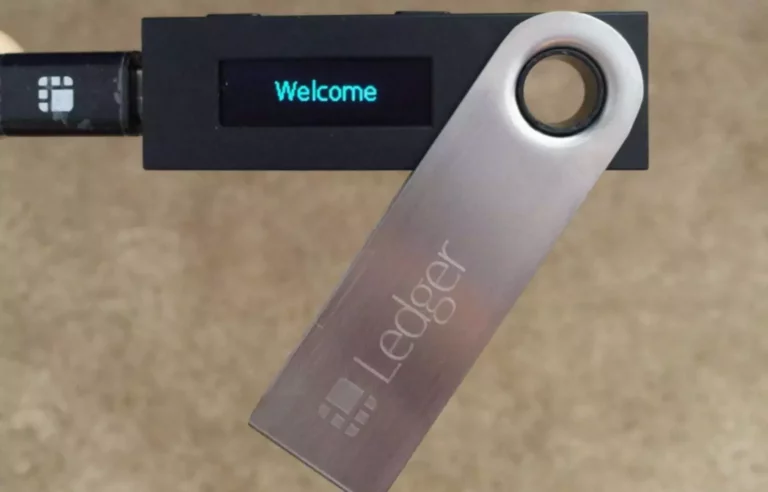What’s Direct Reminiscence Access Dma And How Does It Work?
FinTech
What’s Direct Reminiscence Access Dma And How Does It Work?
Direct Memory Access can be abbreviated to DMA, which is a characteristic of pc techniques. It permits input/output (I/O) units to entry the principle system reminiscence (random-access memory), unbiased of the central processing unit (CPU), which hastens reminiscence operations. Early computer systems used devoted DMA controller chips to handle data transfers.
If an I/O device is prepared, the processor absolutely dedicates itself in transferring the info between I/O and memory. It transfers knowledge at a excessive price, but it can’t get entangled in some other exercise during data switch. DMA is a method of transferring information between a computer’s system memory and one other hardware component that does not require the CPU to course of the info. It uses the CPU only to initiate a data transfer; after that, the opposite component can communicate with the system RAM directly without any further involvement from the CPU. DMA reduces the overhead involved in knowledge transfers, releasing up the CPU to proceed processing other operations as an alternative. During reminiscence access, data is learn from or written to specific reminiscence addresses as instructed by the DMA controller.
The Tech Terms Computer Dictionary
This simplifies the method and reduces the complexity of managing information transfers. Direct Memory Access uses hardware for accessing the reminiscence, that hardware is identified as a DMA Controller. It has the work of transferring the information between Input Output units and primary reminiscence with very less interaction with the processor. The direct Memory Access Controller is a management unit, which has the work of transferring knowledge. Since the SPE’s load/store instructions can read/write solely its own native memory, an SPE entirely depends on DMAs to transfer information to and from the principle memory and native reminiscences of different SPEs.

When we full the switch operation, the DMA controller relinquishes control to the CPU. Direct Memory Access can also be used for “memory to memory” to copy or transfer information in reminiscence. It can transfer costly memory operations (such as giant copies or scatter-gather operations) from the CPU to a devoted DMA engine.
Similarly, if the cached copy of X is not invalidated when a device writes a new value to the memory, then the CPU will function on a stale worth of X. The European Union’s Digital Markets Act (DMA), which enforces interoperability and retains big companies from unfairly favoring their very own providers, has been throwing wrinkles into the plans of massive tech quite a bit these days. The landmark act kicked into effect again in March and has since then found a number of targets to concentrate on, such as Microsoft, Meta, and more. Bytedance Ltd., the corporate behind TikTok, hoped to find a way to skirt the new requirements set in place by the DMA, which only targets massive “gatekeeper” corporations. After exploring the working of DMA controller, allow us to focus on the block diagram of the DMA controller.
Direct Memory Access (dma)
This cause DMA controller to grab the reminiscence bus of CPU and place the desired tackle on the DMA acknowledge wire. Up on profitable information switch the system controller receives the DMA acknowledge and then it removes the DMA request sign. By adhering to those principles, DMA facilitates efficient and reliable data transfer between gadgets and memory, contributing to general system performance and responsiveness.

This streamlined course of accelerates knowledge motion and reduces latency in info exchange within the system. Usually, a specified portion of reminiscence is designated as an area to be used for direct memory entry. For instance, in the Industry Standard Architecture bus commonplace, as much as 16 MB of memory could be addressed for DMA. Other bus standards would possibly allow access to the complete range of memory addresses.
QFour: Name A Few Of The Use-cases The Place Dma Is Used?
Therefore, information processing has turn into a bottleneck with the proliferation of various gadgets, such as sensors, printers, and high-speed modems. By intelligently managing contention for reminiscence entry, the DMA controller optimizes the system’s total performance by minimizing idle time and maximizing throughput. It coordinates communication between totally different components seamlessly, allowing for smoother operation and improved efficiency in dealing with large volumes of data. It kicks off the data transfer operation between units without involving the CPU continuously. When a tool needs to send or obtain knowledge from memory, it initiates a DMA request. By implementing arbitration, DMA optimizes data flow by managing competing requests effectively.

The arbiter follows predefined guidelines to grant access based mostly on predetermined priorities or protocols set by system designers. This method enhances overall system performance by balancing communication between numerous peripherals efficiently. In dual-ended DMA, the DMA controller can provoke read and write operations independently without involving the CPU for each transfer. This enhances efficiency by lowering CPU involvement in managing knowledge motion tasks. Direct memory access (DMA) permits hardware units to switch information between themselves and memory without involving the CPU.
Unlike other kinds of DMA that function independently as quickly as initiated, programmed I/O requires steady involvement from the CPU throughout the complete information transfer course of. 8257 DMA Controller is a sort of DMA Controller, that when a single Intel 8212 I/O gadget direct market access forex is paired with it, becomes 4 channel DMA Controller. It accommodates two 16-bit registers, one is DMA Address Register and the other one is Terminal Count Register. By doing so, DMA slashes latency, boosts throughput, and empowers multitasking prowess in servers, community gear, and storage techniques.
Cycle stealing mode is useful for controllers that monitor information in real time. The web page register was also rewired to address the complete 16 MB reminiscence tackle area of the CPU. They have been supported to the extent they’re required to help built-in legacy PC hardware on later machines. In circumstances where an authentic 8237s or direct compatibles have been still used, transfer to or from these devices should still be restricted to the primary sixteen MB of primary RAM regardless of the system’s precise handle area or amount of put in memory.
Samsung Brings Synthetic Intelligence And Well Being Monitoring Improvements To New Gadgets At Galaxy Unpacked 2024
The controller ensures that knowledge is transferred accurately and promptly with out requiring fixed intervention from the CPU. In this process, a DMA-capable device takes management of the system bus to handle data transfers independently from the CPU. The DMA controller coordinates with other gadgets on the bus for environment friendly data movement, ensuring clean communication move inside the system. By utilizing DMA, gadgets like network playing cards, graphics cards, gadget drivers, and storage controllers can directly access memory locations with out fixed intervention from the processor.
Without DMA, your CPU would be stuck in traffic gridlock, slowing operations and hindering overall system responsiveness. In essence, DMA is the secret sauce that retains the IT infrastructure humming alongside easily and effectively. RDMA is helpful in applications that require fast and massive parallel high-performance computing clusters and knowledge heart networks.
One key characteristic of single-ended DMA is that it includes only one channel for communication between the peripheral gadget and memory. This straightforward approach makes it easier to implement and perceive than other https://www.xcritical.com/ kinds of DMA configurations. Internally, a multichannel DMA engine is normally present in the device to carry out multiple concurrent scatter-gather operations as programmed by the software.
Without DMA, when the CPU is utilizing programmed input/output, it is usually fully occupied for the complete period of the read or write operation, and is thus unavailable to perform different work. With DMA, the CPU first initiates the transfer, then it does different operations while the transfer is in progress, and it finally receives an interrupt from the DMA controller (DMAC) when the operation is done. This function is beneficial at any time that the CPU can not keep up with the rate of information switch, or when the CPU needs to carry out work while waiting for a comparatively gradual I/O data switch. Many hardware techniques use DMA, including disk drive controllers, graphics playing cards, network cards and sound cards.
Additionally, the CPU increments the worth of this system counter by one. An much more superior model of the DMA controller is the arbitrated-ended DMA controller. Finally, interleaved DMA controllers are fancy DMA controllers that learn from one reminiscence handle whereas writing to another totally different reminiscence address.
DMA can also be used for intra-chip information switch in some multi-core processors. Computers which have DMA channels can transfer data to and from devices with a lot less CPU overhead than computers with out DMA channels. Similarly, a processing circuitry inside a multi-core processor can switch information to and from its native reminiscence with out occupying its processor time, allowing computation and knowledge transfer to proceed in parallel. To carry out an enter, output or memory-to-memory operation, the host processor initializes the DMA controller with a depend of the variety of words to transfer, and the reminiscence address to make use of. The CPU then instructions the peripheral device to provoke an information switch.

